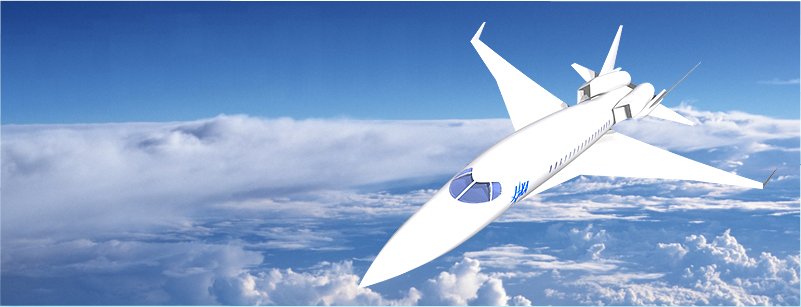


D-SEND Project
The D-SEND project is a set of flight demonstrations of “low sonic boom design technology” which, as a key component of environmental compatibility, is considered as a high priority issue in the “R&D on silent supersonic technology” carried out by the JAXA Aviation Program Group. The D-SEND project is composed of the D-SEND#1 and D-SEND#2 drop tests. In the D-SEND#1 drop test, two different axisymmetric bodies are dropped and the sonic booms are measured and compared with each other. In the D-SEND#2 drop test, an experimental supersonic airplane model (unmanned aircraft with no engine and capable of autonomous flight) based on JAXA’s low sonic boom design technology is dropped and the sonic boom is measured. The sonic booms are measured and recorded by a microphone system that is tied to a line between the ground and a blimp (altitude=1km). These drop tests will take place at the Esrange Test Site near Kiruna in Sweden.
What is sonic-boom ?
When an airplane flies above the speed of sound in the air, many shock waves are generated from the airplane componests such as a nose, wing, engine nacelles, tail wings, and so on. Although these shock waves creates a complicated pressure fields in the near-field of the airplane, they gradually coalesces each other during the propagation through the atmosphere and finally forms two intense shocks at nose and tail of the airplane. This shock waves can be observed as an N-shaped pressure signature on the ground and it is called a "Sonic-Boom".
Project Targets
The objectives of the D-SEND projects are as follows;
- Demonstration of JAXA's low-sonic-boom design concepts.
- Demonstration of the airborne sonic-boom measurement method.

D-SEND Database
The D-SEND Database is a database of the data obtained in the D-SEND project, such as measured sonic boom signatures. The aim of the database is to improve the sonic boom prediction tool and low sonic boom design methodology through utilization by Japanese and international sonic boom researchers.
The database involves the model configuration data, flight(drop) path data, weather data, and measured sonic boom data of the D-SEND#1 drop test conducted in May of 2011, as well as those data in the ABBA Test, which is conducted to demonstrate JAXA’s sonic boom measurement system. The D-SEND#2 flight test data is scheduled to be published in 2013.
JAXA site policy is applied to the contents in this web site.
![]()
If you would like to use the D-SEND Database data in your papers, presentations, reports, brochures and citations, you should state that the data are provided by JAXA.
And you must send the copy to JAXA within one month since a publication.